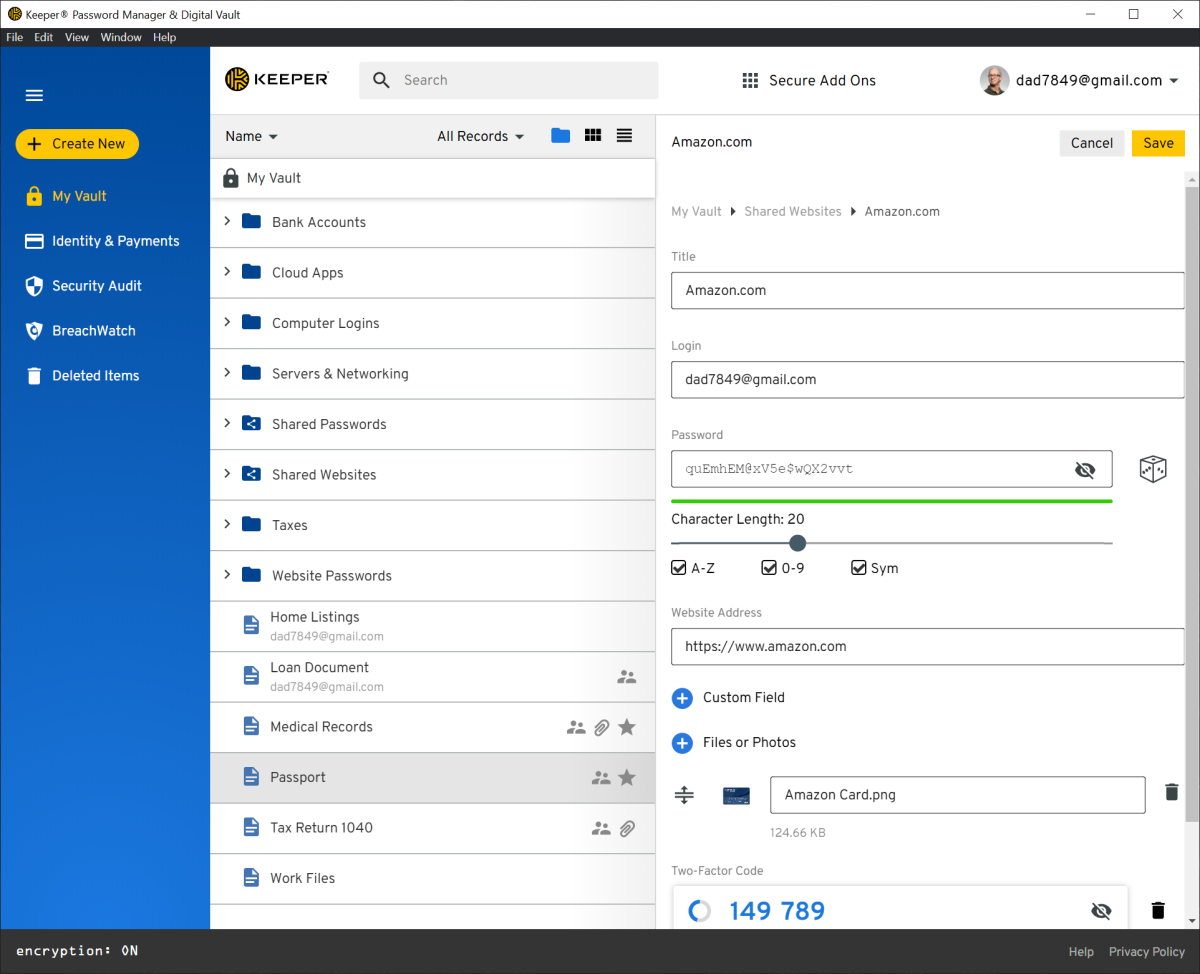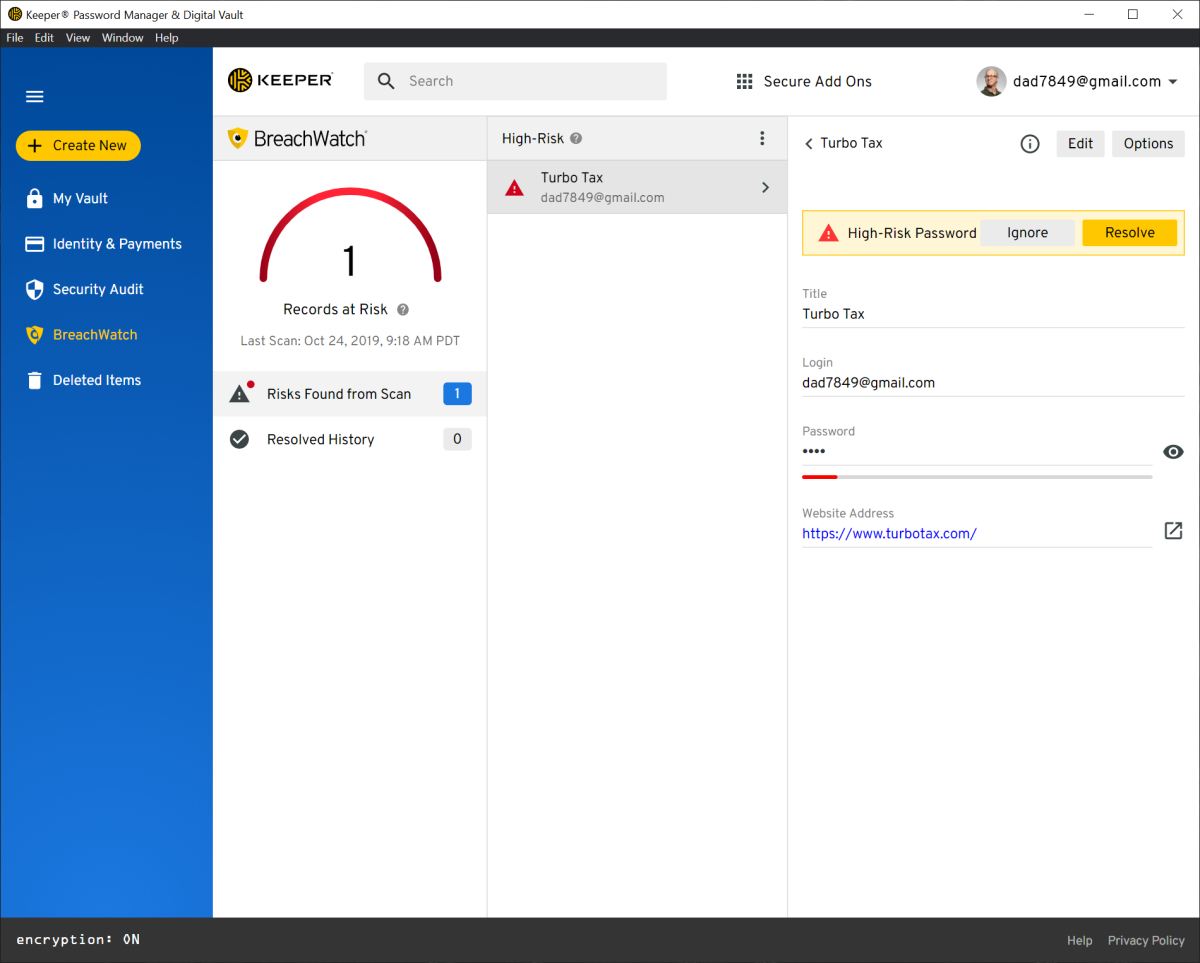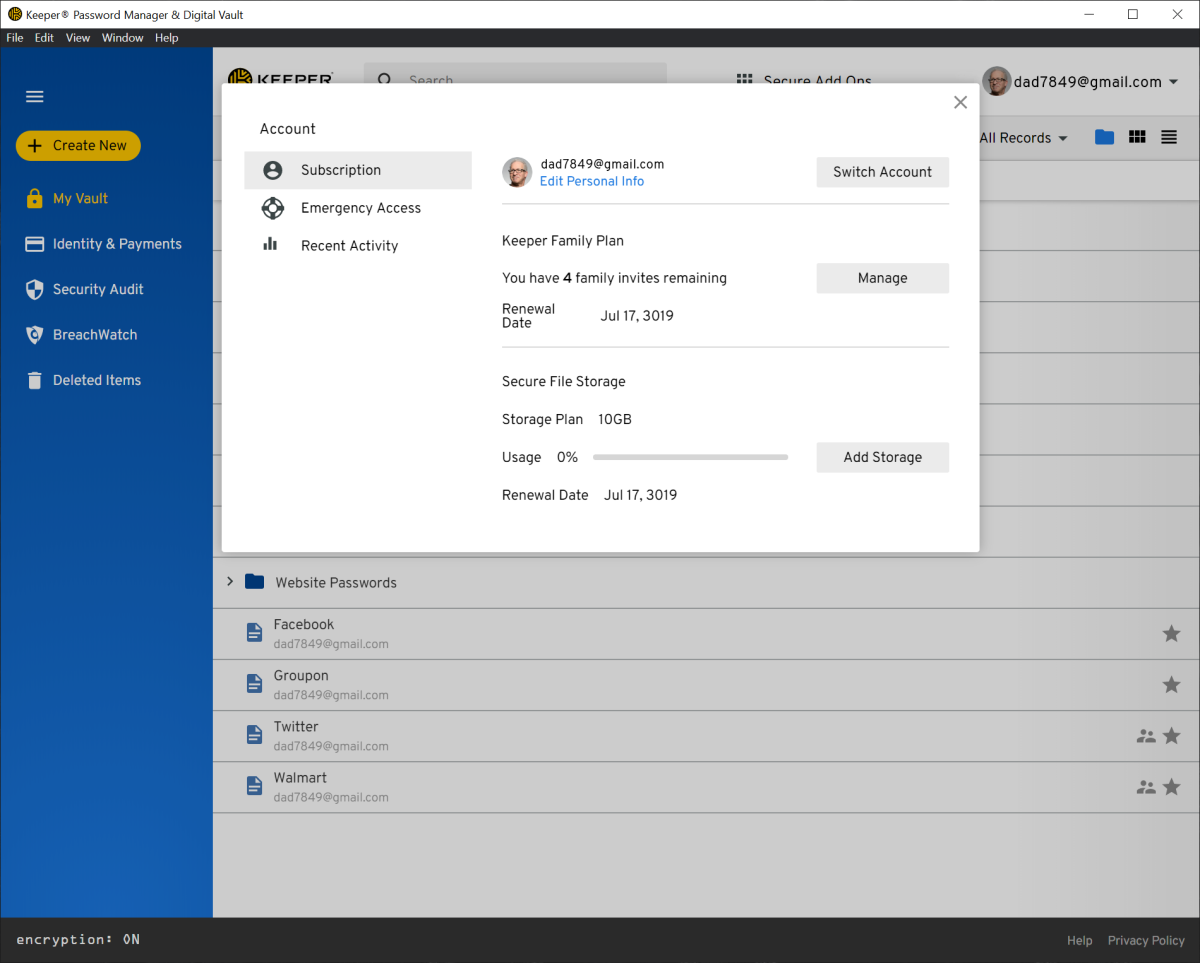 At a Glance
At a GlanceExpert's Rating
Pros
- Exceptionally strong security
- Seamless exprience across platforms
- Easy-to-use web interface
Cons
- Users may find some security features inconvenient
- Free version more limited than competitors’
Our Verdict
Keeper password manager provides the features and flexibility you need to ensure the integrity of your passwords.
Best Prices Today: Keeper
Editor’s note: This review was updated on 3/7/23 to update pricing and plan details.
Keeper has always emphasized security, more than some other password managers. But in the past that sometimes came at the expense of things that consumers prize like ease-of-use and eye-catching aesthetics. Thankfully, the password manager has made some smart updates since the last time I reviewed it, including modernizing its interface, while strengthening its already impressive security features. Its pricing has also dropped to $34.99 for the Personal Plan and $74.99 for the Family Plan (and discounted 30% below that for the first year.)
Further reading: See our roundup of the best password managers to learn about competing products.
Getting started with Keeper
Keeper’s guided multi-step setup gets you up and running quickly. You’re first asked to import any passwords you have saved in your browser. Given the inherent risks of storing passwords this way, all users should happily oblige. You can also import passwords from 15 other popular password managers, including Dashlane and LastPass. Next, it walks you through the process of installing the Keeper browser extension, creating your first record, and adding your personal and credit card information for auto form filling. Finally, it prompts you to turn on two-factor authentication; it supports several different authentication methods, including text message, Google Authenticator (TOTP), Smart Watch, RSA SecurID, and DUO Security and FIDO Universal 2nd Factor (U2F) compatible hardware security keys.
How does Keeper work?
As with other password managers, Keeper’s main utility is capturing your credentials whenever you log in to a website. When you first visit a secure site after installing Keeper, you can have it save your login when prompted or create a new username and password directly in Keeper by clicking the lock icons that appear in those fields. Keeper will generate a password of 8 to 51 characters using a combination of upper- and lower-case letters, numerals, and symbols. When you save the record, Keeper automatically fills the site’s login fields with the new credentials.
While seriously security-minded users stand to get the most out of Keeper’s robust features set, even those just wanting an easier way to manage their passwords will be safer for using it.

When you save a record, Keeper automatically fills the site’s login fields with the new credentials.
Keeper
Once you’ve saved your login credentials for a website, Keeper will surface a pop-up prompt each time you return, asking if you want it to autofill the credentials. If you have multiple logins for a site—a bank where both you and your spouse have accounts, for example—you can view all of them by clicking the lock icon and select the appropriate one for autofill.
Keeper also recognizes when you’ve accessed a website’s “change password” page and surfaces a one-click update-and-save option to store the new password in your vault. It does not, however, support automated password updates as this violates Keeper’s “zero knowledge” policy—to ensure your sovereignty over your passwords, the password manager eschews any features that would expose your login credentials to the company. As a Keeper contact explained to me, automatic password updates require passwords to temporarily reside on Keeper’s servers and that is anathema to the company.
The Keeper browser plugin is fairly minimal. At the top is a search field for looking up password records by website name. Beneath that is a toggle for enabling/disabling the lock icons that appear in websites’ login fields, and buttons for accessing your vault, various Keeper settings, a user guide, and a logout button.

Keeper’s BreachWatch feature scans the Dark Web to see if your passwords have been compromised.
Keeper
Keeper gets better at its job
Clicking on “vault” in the browser extension opens Keeper’s web interface. The UI has received a makeover that introduces cleaner lines, customizable themes, and adjustable panes, among other enhancements. Modern interface elements such as modals, popups, and dialogs have been added to improve vault organization. And workflows have been streamlined to reduce the number of clicks required to complete a task.
Keeper has also improved the app’s search functionality. It now offers advanced search capabilities to quickly pinpoint data in the vault. Users can employ multiple search operators in combination to locate folders and records and search specific values in specific record fields. A Quick Search feature has also been added to instantly show recently viewed items.
The vault displays all your passwords in a list or as tiles, and you can group records into folders if you want to organize them further. Every password record allows you to attach files and photos, create custom fields, and add notes. The vault also keeps a complete record of every password you’ve used for a site and allows you to restore them. It maintains version histories of all attached files, as well. Personal information and credit card records are stored in their own section.
The Security Audit section of the interface assigns a password strength to each entry so you can easily identify weak and reused passwords and change them. It also displays how long it’s been since each password was changed, though NIST guidelines no longer recommend regularly changing you password and advise you to do it only after you know it’s been compromised. Keeper’s BreachWatch feature makes it easier to discover stolen passwords, by scanning the Dark Web to see if any of your credentials have been found in previous breaches.
Keeper supports secure sharing of any password with anyone who has a Keeper account. If you try to share a record with someone who doesn’t, they will be instructed to sign up for a free account. By default, the recipient will be able to use the login but not change it. You can expand permissions on the record up to making the recipient its owner. You can also share multiple passwords by creating a shared folder, with permissions working much the same as with an individual record. Keeper’s Emergency Access feature allows you to grant access to up to five trusted contacts, who can log in in the event you can’t for whatever reason.

Keeper’s Family plan provides password vaults for five people.
Keeper
Keeper’s free version provides access to your password vault on unlimited devices and secure sharing. It’s worth starting there to determine if you want to pay for the service. For $34.99 a year, the Personal plan adds unlimited password, payment, and identity info storage; fingerprint and face ID login; emergency access; and 24/7 support. The Family plan includes everything in the Personal plan and adds five private vaults, 10GB Secure File Storage, and the ability to share folders and records, and manage permissions, for $74.99 a year.
Should you use Keeper password manager?
Thanks to some welcome features updates, Keeper is one of the strongest password managers available. While seriously security-minded users stand to get the most out of its robust features set, even those just wanting an easier way to manage their passwords will be safer for using it.
Editor’s note: Because online services are often iterative, gaining new features and performance improvements over time, our reviews are subject to change in order to accurately reflect the current state of the services.
